Positioning, Messaging, and Branding for B2B tech companies. Keep it simple. Keep it real.
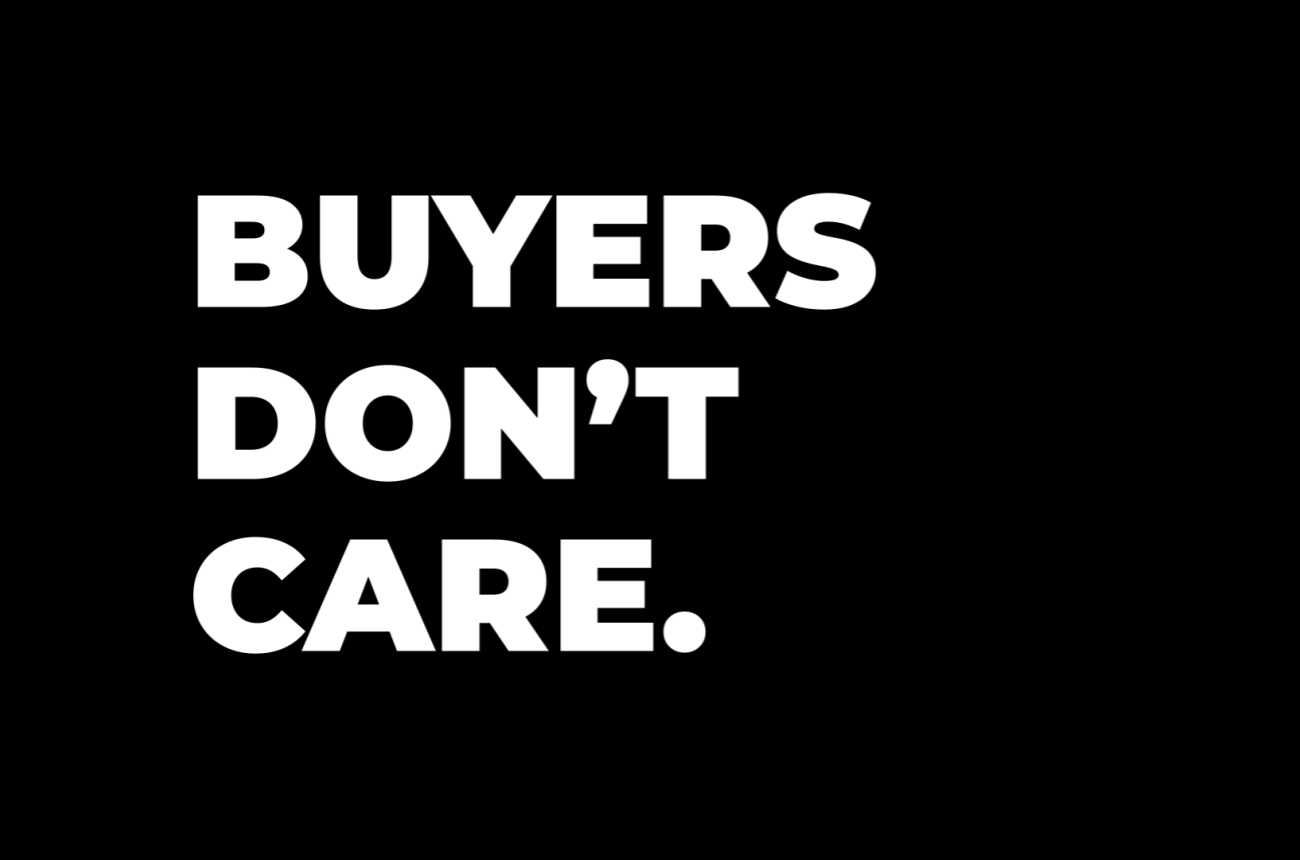
Does this sound familiar?
“Last month I deleted 100 marketing emails without reading them. This month our marketing team sent 300.”
Every B2B marketer is guilty of this (me included).
We build funnels, campaigns, and attribution models as if buyers care about our products as much as we do. But when we’re buying, suddenly things are the exact opposite.
We sell as if buyers care. We buy as if we don’t. Oh the irony (and hypocrisy).
That’s the gap where B2B GTM waste festers.
When B2B buyers are in-market, they have serious considerations that get riskier the more complex and pricey the solution gets:
Everything else (UX, brand, clever ads, slick design, roadmap, PDFs) sits at the edge of those questions. Still important, yes. But still secondary.
Here’s what we now know thanks to research from Ehrenberg-Bass:
The majority of buyers aren’t shopping when we think they are. They don’t care about our bright shiny new thing because they’re happy with the one they already have.
When they finally do care, 6sense’s 2025 Buyer Experience Report shows most of the journey is already done before they talk to sales. By that point, the favorite usually wins.

So the attention math looks something like this:
Inside your company, you have weekly GTM meetings and dashboard reviews. On the buyer side, you might get 45 minutes on a Thursday if you’re lucky enough to make their Day-1 list.
The crazy thing is that even with this reality staring us in the face, we still resist it. Like there HAS to be a workaround even though we would never take the bait ourselves when we’re in buying mode.
Here’s the empathy gap.
When we sell, we act as if:
When we buy, we:
When the shoe is on the other foot, marketers and sellers are no different. We’re the same impatient, overloaded buyers like every other buyer.
We know how little we care as buyers. But we insist on building GTM systems that assume buyers care a lot. They don’t. Neither do we.
(I’ve written before about this disconnect. It’s the elephant in every boardroom.)
Buyers are selfish because their job is to protect their time, their team, and their career. Marketing’s job is to make that easier, not harder.
So design for that reality.
We’re all buyers. We delete emails and screen calls. We bounce from sites that start with how great “we” are and how revolutionary “our” thing is.
Many of us block ads, browse anonymously, use fake email accounts, and spend less time reading marketing emails.
The people creating campaigns are the same people ignoring campaigns when they're buying.
The question GTM teams should be asking is: “If I wouldn’t engage with this as a buyer, why am I building it as a seller?”
Most buyers aren’t shopping today. When they are, we only get a sliver of their time. Inside that sliver, they care about their problem, their risk, and their time (not ours).
So be creative! Build something you’d actually engage with if the roles were reversed. Make it easy for them to say “Let’s see if this might actually help.”
Don’t know where to start?
Ask the buyer you already know best: You.
If you like this content, here are some more ways I can help:
Cheers!
This article is AC-A and published on LinkedIn. Join the conversation!

By Gerard Pietrykiewicz and Achim Klor
Achim is a fractional CMO who helps B2B GTM teams with brand-building and AI adoption. Gerard is a seasoned project manager and executive coach helping teams deliver software that actually works.
Here is an effective way to use an AI tool like Manus.im. Pick one shared task everybody hates, like building slide decks. Use AI to get to an 80% draft in minutes. Spend the saved time on decisions and conversations, not formatting.
Over the past few months, we’ve written about why AI adoption frustrates managers and how leaders can remove the barriers.
This time we want to stay close to the ground.
The real question is no longer “What’s our AI strategy?” It’s “What is the smallest thing I can do right now that actually helps my team?”
Not that long ago, simple AI tasks were clunky (one could argue some still are).
You wrote a prompt, fixed the output, and still spent an hour or so cleaning it up.
That has changed.
Today, GenAI and tools like Manus can take you from a blank page to an acceptable first draft with no integrations and no scripts.
So instead of chasing a giant AI program across the whole company, start with one workflow everyone already knows and already dreads.
PowerPoint.
At some point, most of us have to create a slide deck. It’s repetitive work. It eats time. Most people do not enjoy doing it (or sitting through bullet-point hell).
Recently, Gerard has been running the following use case with his team.
1. Start with a single prompt inside Manus (you can grab the prompt here):
2. Then attach a document with the content and run the prompt.
3. In about five minutes, Manus spits out a fully structured deck with:
Is it perfect? No.
Is it good enough to work with? Yes. Roughly 80% of the way there in fact.
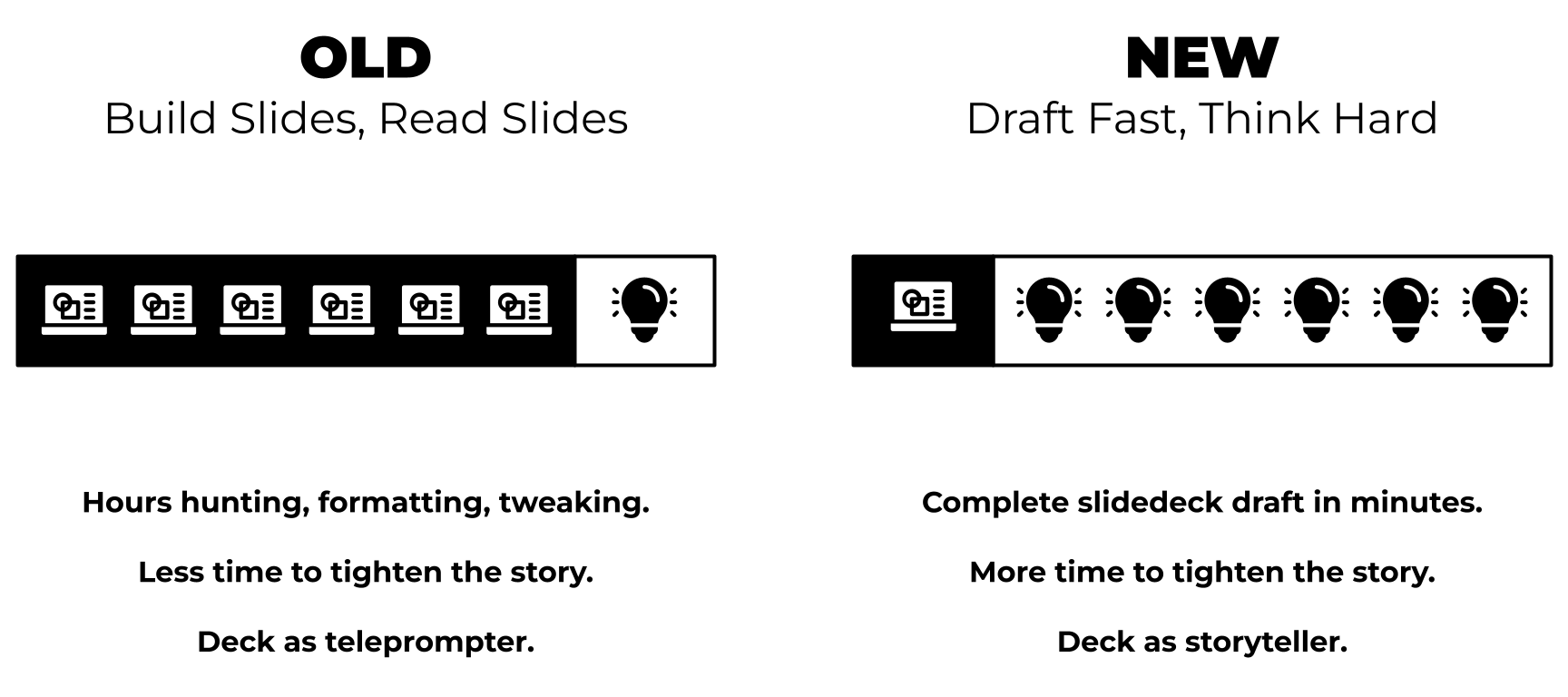
Now you have oodles of time left to focus on fine-tuning the idea inside the deck instead of the deck itself.
This is where expectations matter.
AI will not:
The quality of the presentation is still limited by your own tacit knowledge and the input you give it. If the document is vague or wrong, the deck will be vague or wrong.
What AI can do:
AI gets you to a rough but usable version fast. You still need your tacit knowledge (those finite judgment calls in your head that never make it into documentation) to edit, refine, and present it well.
That last 20% is where your expertise shows up.
AI does not do that part for you (nor should it).
When AI adoption stalls, a lot of times it’s because we start too big.
We talk about agents and platforms that most people will never touch. Or we tell everyone to “go use AI” for random tasks like email summaries, then walk away.
Real adoption looks different.
It starts with one visible, repeatable use case that:
A slide deck generator does that:
When we see something like, “Watch this: five minutes from doc to deck,” we don’t just hear about AI. We feel the benefit.
Skepticism turns into curiosity.
Curiosity turns into “Can I try that with my next presentation?”
And that’s the point.
It’s easy to treat this only as a time-saver.
But the point of a deck is not to have slides that act as a teleprompter. The point is to communicate an idea clearly enough that your team can act on it.
If AI takes the build time from two hours down to five minutes, the real win is what you now do with those 115 minutes you just freed up:
AI makes you more efficient at building the artefact.
Use that space to become “better at” the communication.
You don’t need Manus specifically. Any solid AI tool works.
Here's the workflow:
Now you are not “playing with AI.”
You are changing how work gets done in a way your team can see and copy.
You’re helping your team become more efficient because they are more effective first.
We didn’t include the full prompt here because it is long and specifically tuned for Manus.
If you want to give it a try using Manus, grab the free Google Doc here.
Feel free to share it and make it your own.
Again, the point here is not “magic words”.
It’s the pattern:
That’s how real adoption happens—one visible workflow at a time.
If you like this co-authored content, here are some more ways we can help:
Cheers!
This article is AC-A and published on LinkedIn. Join the conversation!

After more than 25 years in B2B Tech Marketing, I’ve seen this movie too many times, and it keeps rerunning. So allow me to beat a dead horse.
A leader demands marketing prove ROI despite years with no GTM plan, no tracking except MQLs, just guesswork and spray-and-pray. Yet they want the receipts.
It’s crazy talk that sends marketing on wild goose chases instead of fixing the problem.
And it’s not a measurement problem. It’s a management problem.
Fixing it starts with real straight talk around operationalizing basic GTM tracking that should have happened from day one. Things like cleaning up contacts with zero context in the CRM.
Within a few months (yes, it takes time to build these systems), patterns emerge that couldn’t be seen before, such as buying group signals, channel performance, actual sales cycles.
But ROI? No.
There’s nothing to compare it to because marketing is building the measurement system while being asked to justify the investment.
It’s Groundhog Day all over again.
Neil deGrasse Tyson nailed why this keeps happening:

Neil’s advice?
“The scientific method is there to save you from yourself, to remind you that every conclusion must be tested, questioned, and refined.”
Neil deGrasse Tyson
Research from 6sense shows that 81% of B2B buyers choose their vendor before ever contacting sales. Yet most marketing teams are still measured on MQLs (Marketing Qualified Leads) that capture only 2-3 out of 10 buying group members.
Your marketing might be working brilliantly (or not). You just can’t see it.
Kerry Cunningham’s “MQL Industrial Complex” explains why: Only 3-5% of website visitors fill out forms.
The other 95-97% (including the CFO checking you out before signing off, the VP of Engineering evaluating your technical docs, the procurement lead comparing pricing) remains completely anonymous and invisible.
For the past 15-20 years, B2B tech leaders (including marketing) have operated on a fundamental misunderstanding about how marketing works and how it’s measured. Not because they’re incompetent, but because the measurement systems we all adopted from companies like Eloqua, Marketo, and HubSpot were built on flawed assumptions. (More on how this happened here.)
The truth is, marketing does not create revenue directly. It can only influence revenue by multiplying sales effectiveness.
One of the best thought leaders and data scientists on this topic is Dale W. Harrison, and his research demonstrates this.
When properly instrumented, marketing investment generates a 20:1 return, not by “driving” revenue, but by making sales 3x more efficient. Close rates improve from 4:1 to 12:1. Sales cycles shorten. Deal sizes increase.
But these effects compound over quarters (sometimes years), not weeks. 90% of revenue influenced by a quarter’s marketing activity won’t be recognized until 8-9 months later or longer, depending on how complex and pricey your tech is.
This is why your CFO can’t see it.
Because of time lag, you’re measuring in the wrong timeframe with the wrong metrics.
Short answer: Stop asking marketing to prove last quarter’s ROI, especially if you don’t have the systems in place to track and measure the YoY data needed to answer that question.
So ask better questions that reveal multiplier effects:
Pull your leads from the last 12 months (if you have the data!) and group them by company domain. You’ll typically see 1.5-2.5 leads per account.
Now ask:
Answers to those questions help you establish buying group signals that can predict pipeline better than individual lead scores.
Five people from a target account researching your solutions (even if no one fills out your forms) is a stronger signal than one person downloading a PDF.
As Neil deGrasse Tyson said, the scientific method requires a hypothesis. Most B2B leaders are demanding marketing prove ROI without ever stating what they believe should happen.
Treat marketing like capital. Its job is to cause more profitable closes by multiplying your Sales effectiveness. Fund programs that show tested lift and save money and time by cutting the rest.
B2B Marketing has never been predictable or linear. Buyers are irrational. Decisions involve politics, budget constraints, competing priorities. Multiple stakeholders rarely move in straight lines.
But that doesn’t mean we can’t measure marketing. It means we’ve been measuring the wrong things and looking in the wrong places.
The companies winning today aren’t the ones with the most MQLs. They’re the ones that show up consistently when buyers are researching, earning trust across multiple stakeholders, and making sales teams more effective.
Your marketing could already be doing this.
The question is whether you’ve built the systems to see it.
If you like this content, here are some more ways I can help:
Cheers!
This article is AC-A and published on LinkedIn. Join the conversation!
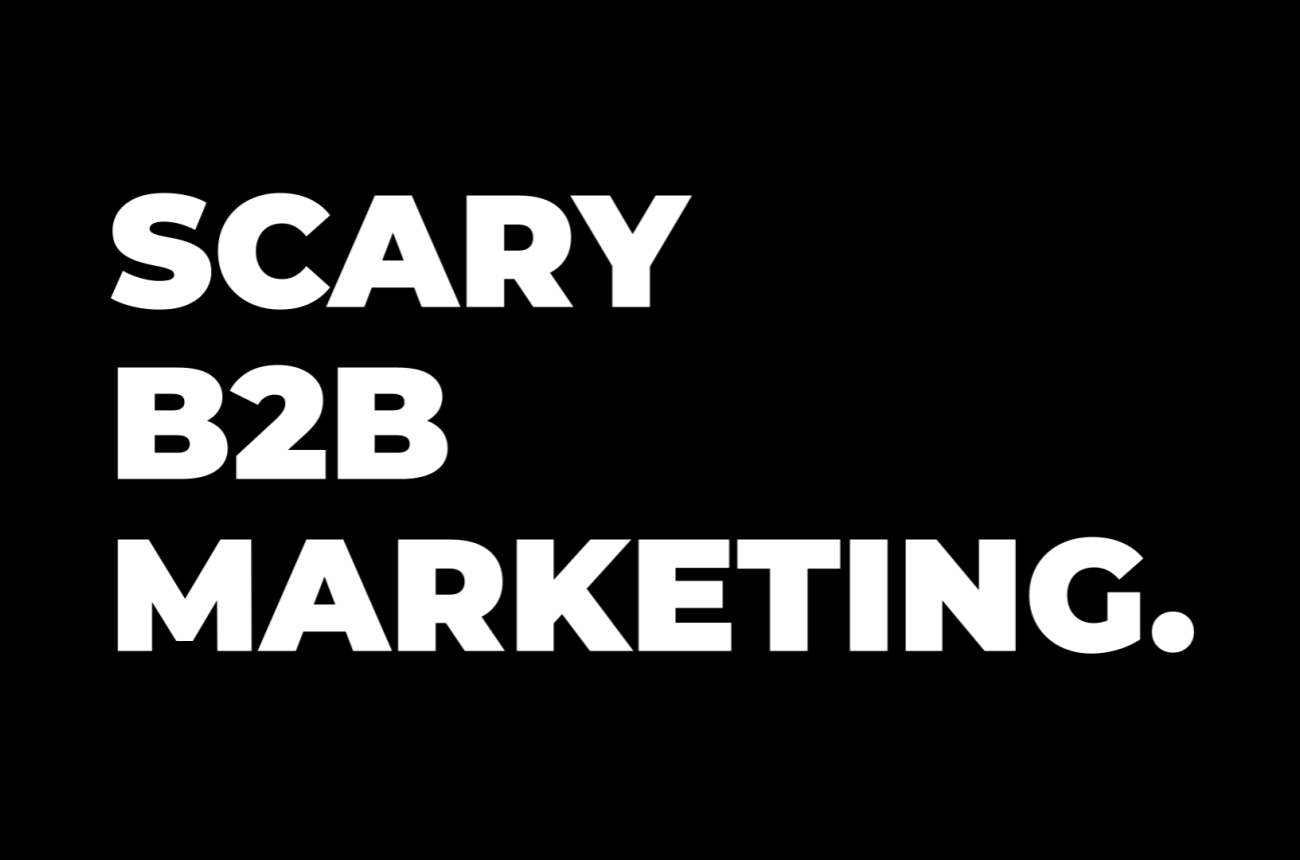
It’s Halloween, so let’s talk about what’s actually scary in B2B tech marketing right now. No, not costumes or tricks. Just the habits and status quo that keep showing up.
Last month, someone showed me their new content calendar. Dozens of blog posts and LinkedIn updates. All written in a few hours.
I asked one question: “Which one sounds like you?”
Silence.
When your default is “AI first, human second,” you’ve already lost.
Some of my clients still struggle with getting out of their own way. They know they need to, but they still resist. They see the light but revert to throwing darts in the dark.
I had a great chat this week with Jacob McGill over at 8020 Media and he said it best:
“It’s like they are waiting to get diabetes before they go on the diet.”
Jacob McGill, 8020 Media
For now, they continue doing what’s comfortable.
Status quo still reigns.
Gartner: Marketing budgets have remained flat at 7.7% of company revenue for the past two years.
McKinsey: Only 27% of organizations review all AI-generated content before it goes live. A similar share checks 20% or less.
Graphite: By November 2024, AI-generated content surpassed human-written. But search engines aren’t rewarding it. Across recent SERPs, about 86% of top-ranking articles are written by humans. Roughly only 14% are AI-generated.

Content Marketing Institute: Only 4% of B2B marketers report high trust in AI content (67% medium, 28% low).
When our own team doesn’t trust what we’re publishing, and our buyers don’t either, we have a brand problem masquerading as a content problem.
Like with any shiny new toy, we like to play.
I made this mistake with ChatGPT in the early days. Because I’m not a writer, I thought it could help me write articles.
How wrong I was.
Once you realize AI is just another tool, you soon realize it’s only as good as the person using it. And that comes with all kinds of limitations as mentioned in last week’s Razor.
“The trap isn’t that AI gets it wrong. The trap is that AI gets it average, and average feels good enough when you're moving fast. I’ve fallen into this trap. Everyone does. But once you see the patterns, you self-correct.”
For the record, Google doesn’t penalize content just because it’s AI-generated.
It penalizes content that’s low-quality, unoriginal, or spammy. And most AI content checks those boxes.
Google’s March 2024 update aimed to cut “unhelpful results” by roughly 40%. Sites scaling garbage with AI got hammered. Their January 2025 Quality Rater Guidelines now explicitly allow the “Lowest” rating for AI-generated content that lacks effort, originality, and value.
Once again, AI isn’t the problem. It’s lazy use of AI.
Although this has been written about numerous times, it’s worth repeating. Kind of like telling your kids to clean their rooms.
Most of your market is not going to buy your product today. If you’re lucky enough to demonstrate that you can reduce their risk of switching (Fear of F***ing Up), you could close roughly 5 out of every 100 opportunities at any given time.
But chasing hand-raisers quarter by quarter means you’re constantly chasing and starving.
Brand creates memory recall and earns confidence and trust in the rest of your potential market (the 95 out of 100) so when it’s time to upgrade or switch, they remember you.
But that’s not what’s happening.
GTM teams are using AI to scale content for the 5% while ignoring the 95%. More emails. More posts. More “personalized” outreach that reads exactly like everyone else’s.
“About 5% of your market is buying now; 95% isn’t. Brand memory wins the pick before the RFP.”
Content Marketing Institute
Forrester’s research confirms that differentiation happens during the different moments where brands show up.
The key is showing up.
Consistently.
The companies winning right now aren’t the ones with the best prompts. They document what makes them different before they handed anything to a model. They think before they act.
As mentioned last week, your best performers have tacit knowledge. Those are the judgment calls and micro-moves that make your frameworks work in your context and separate you from everyone else.
The companies that win also build brand memory with the 95%, not just harvesting the 5%. Think of it like reforestation. The trees you plant today will help you build tomorrow.
AI scales what’s documented. If your secret sauce lives in heads, AI won’t help you scale.
McKinsey’s research shows only 27% of organizations review all AI-created content before use. That’s not AI adoption. That’s abdication.
Here’s what every GTM leader should ask:
If your best rep quit tomorrow, could AI recreate what made them effective?
If your plan is “more content, faster,” you’re asking for a traffic dip and a trust hit.
If your plan is “document our unique value, build memory, prove impact,” you’re building something that compounds.
The scary part isn’t AI.
It’s the teams that keep treating it like a magic wand instead of a multiplier.
If you like this content, here are some more ways I can help:
Cheers!
This article is AC-A and published on LinkedIn. Join the conversation!
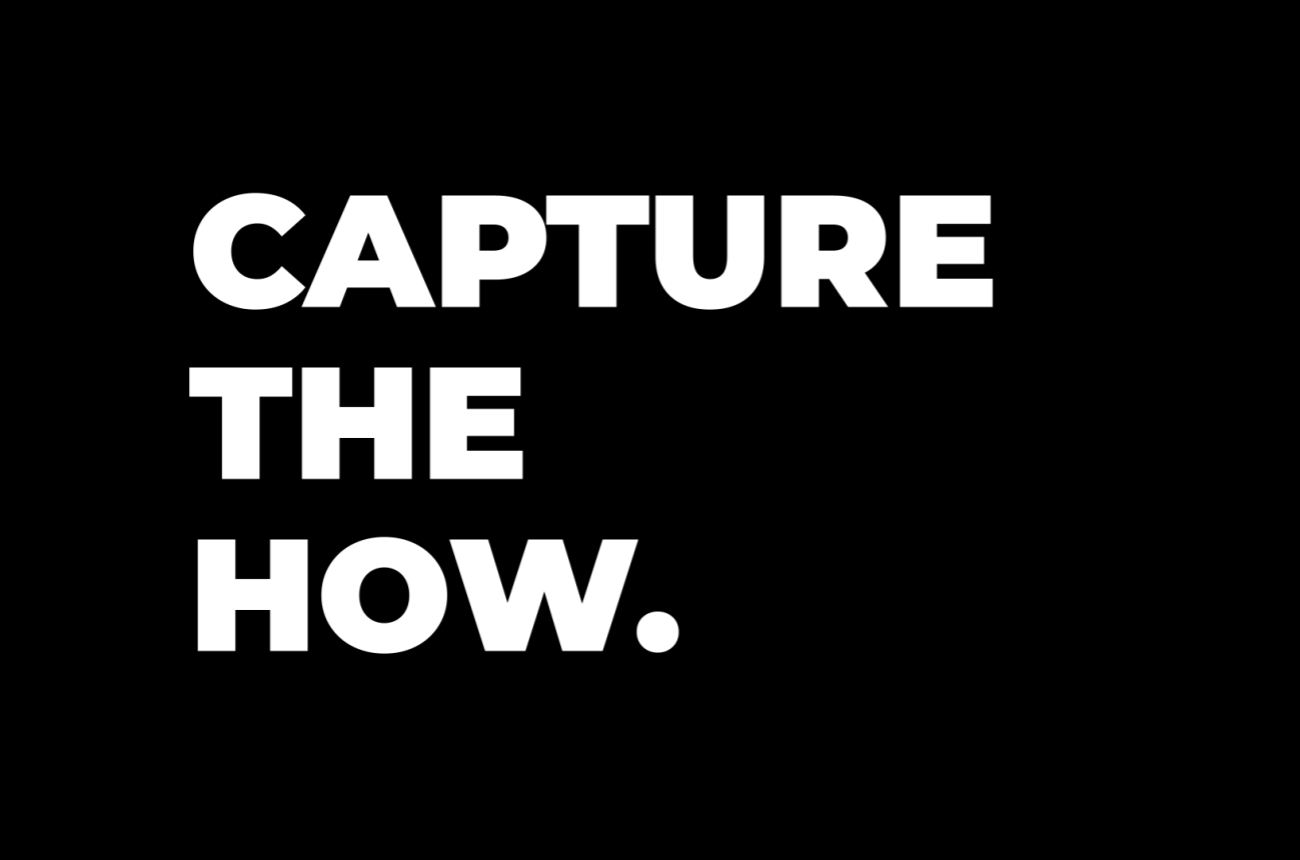
Tacit expertise is your advantage. That’s because AI scales what’s documented. If your secret sauce lives in heads, not docs, AI will scale your competitor’s average instead of your edge. Document tacit knowledge to capture the judgment calls that make your frameworks work. Then use AI to scale what’s true.
I’ve been following Rick Beato for years.
For those unfamiliar, Rick hosts an excellent YouTube channel for music professionals, amateurs, and geeks like me.
Being a musician and a marketer, Rick’s insights ring loud and clear with me when it comes to AI adoption.
In the video below, Rick said:
“A lot of musicians talk to me and they’re really freaking out about these [AI] programs.”
A lot of GTM teams are freaking out too.
You don’t need to be a musician to understand what Rick’s getting at. His real-world examples are not mutually exclusive to the music industry.
You may not know Max Martin, but you probably know the dozens of number-one songs he’s written or produced for Taylor Swift, The Weeknd, Ariana Grande, the list goes on.
He’s given fewer than five public interviews in the past decade. When he has talked, he shares high-level principles:
But the thousands of micro-decisions he makes in the studio? Those aren’t documented.
How does he know when to rewrite a pre-chorus for the 47th time? What makes him choose one word over another for sound versus meaning? When does he stop?
That level of expertise (the tacit, moment-to-moment judgment) isn’t captured.
Same with Serban Ghenea, who’s mixed most major pop hits of the past 25 years. He’s given maybe two interviews in twenty years. When he does talk, he says things like, “There’s no bag of tricks. The song dictates the tools.”
Rick’s point: Even when top practitioners share something, they don’t share the real how, the accumulated judgment that makes their work different.
That’s the nuance. That’s human.
And it’s not because you don’t have ANY documentation.
You probably have countless playbooks, specs, and guides.
But the micro-moves that separate your best performers from everyone else? Those aren’t captured.
That’s your Max Martin Gap.
The judgment calls that make your frameworks work in YOUR context.
Rick tested this with a simple example:
Why? Different training data.
ChatGPT trained heavily on Wikipedia. The other models trained on YouTube, where the answer exists in a popular video.
Same question. Different models. Different training data. Different results.
(If you want to see Rick break this down with the 52 factorial test, including his 9yo son reciting it years ago, watch the full video.)
Now think about your GTM motion:
If that’s not written down, AI can’t learn it.
More importantly: your next hire can’t either.
Let’s say you ask ChatGPT to draft a sales email. Build a positioning doc. Forecast pipeline. Whatever.
It spits out something fluent and confident.
Your team thinks, “Good enough.”
You ship it.
Except it’s generic. You just spent time and money to sound like everyone else.
(Ironically, B2B Tech Marketing has been doing this without AI for years!)
The trap isn’t that AI gets it wrong (it “can make mistakes”).
The trap is that AI gets it average, and average feels good enough when you’re moving fast.
I’ve fallen into this trap. Everyone does. But once you see the patterns, you self-correct (hopefully).
I use AI every day (like even this article). Not to write for me, but to help me ideate, research, fact-check, and provide structure.
(I have ADHD so every bit of structure helps... haha!)
I also acknowledge that I use AI as an assistant at the bottom of every article.
Instead of feeding AI generic prompts, train the model on actual documented process.
The “real how” from your best performers can help you stand out and scale faster than those who rewrite other blog posts and summarize frameworks they never use.
The companies that will win with AI aren’t the ones with the best prompts. They’re the ones who documented what makes them different before they handed anything to a model.
David Hurley said it best:

If we accept generic AI output because it’s fast, we’re accepting low-level standards... or no standards at all.
Rick’s video is a good reminder that the AI limitations in the music industry applies to any industry.
We already know how AI is replacing manual tasks (like every other major tech revolution).
But will it ever be able to replace the tacit nuance that comes from human creativity?
We don’t need to freak out.
We just need to be creative.
If you like this content, here are some more ways I can help:
Cheers!
This article is AC-A and published on LinkedIn. Join the conversation!

Form fills and PDF downloads indicate curiosity, not intent. Treat forms as supporting evidence inside a broader pattern. Route on patterns for speed. Use causality to decide where to invest.
GTM teams are coming to realize buyers don’t move in a straight line.
As decisions get real, more time can pass and more stakeholders can show up.
The part many still miss: a contact form fill or a gated PDF download doesn’t change any of that. It’s a weak signal until it’s part of a bigger picture.
Paula Skaper, over at 33 Dolphins, posted this LinkedIn comment on a recent article:
“Would love to see a follow up on buying signals. Something tells me ‘filling in a form to download a lead magnet’ is guaranteed to be on the list.”
She’s right.
An eBook gate, by itself, is weak. It proves someone traded an email for content. It does not prove buying intent.
Some forms can be strong: demo request, pricing/config quote, security questionnaire, RFP upload. They get stronger when surrounded by hotter activity in a short window.
Buyers don’t march left-to-right when we want them to.
They loop. They backtrack. They add and remove people. They rinse and repeat on their time, not ours.
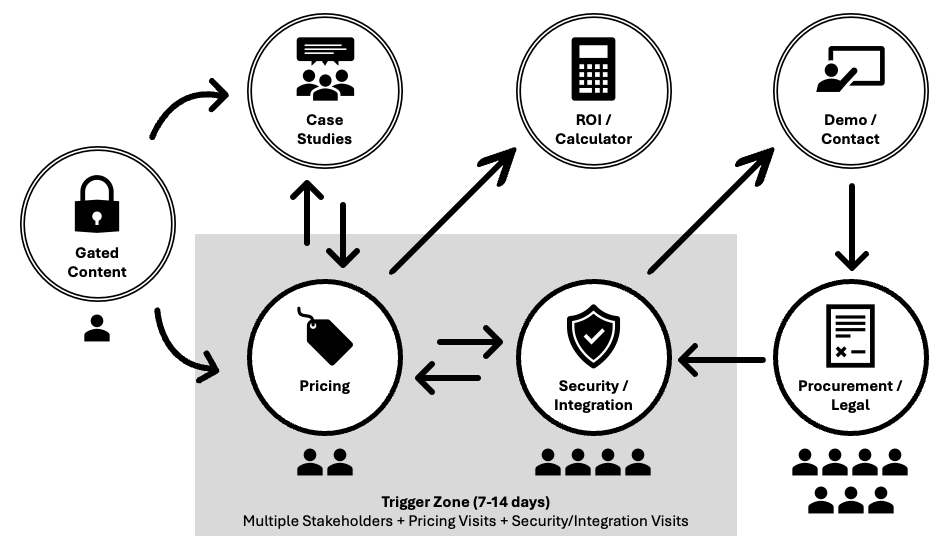
Read the pattern across people, content, and time, not a sequence.
Our job is to spot momentum, not enforce a linear path.
Routing rule (make it binary):
Everything else goes to nurture until the pattern appears.
“We need to stop tossing early interest over the fence. Marketers must own that signal until it’s contextualized, confirmed, and validated.”
Kerry Cunningham, 6sense
Patterns are correlation. That’s fine for routing fast. When it’s time to fund programs, you need causal analysis.
Simple play:
For more detail, check out the 6-Part Causal CMO series I did with Mark Stouse.
If a signal doesn’t move win rate or forecast quality, downgrade it.
Keep the list short. Keep it honest.
Adopt the trigger for 30 days. Tag “Signal of Record” on every opp.
Share the lift.
If you like this content, here are some more ways I can help:
Cheers!
This article is AC-A and published on LinkedIn. Join the conversation!